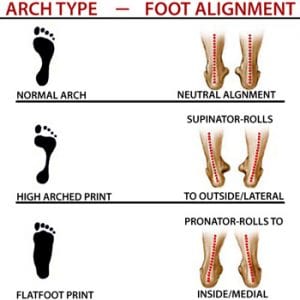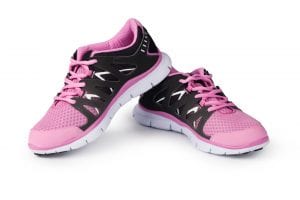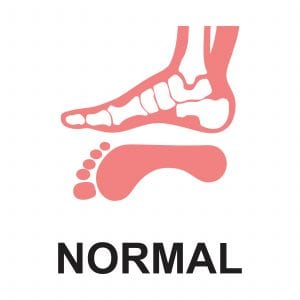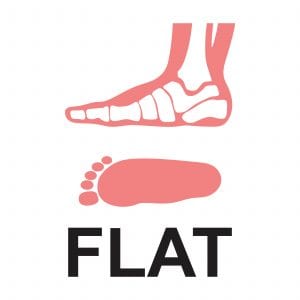The Proper Fit for Shoes
- Apr, 08, 2018
- Trenton Talbitzer
- Back Pain, Chiropractic
- No Comments.
The Proper Fit for Shoes
 One of the complaints that patients come in to our office with regularly is foot/ankle pain. Some times it is due to an injury, but most often the problem lies with the mechanics of their foot. Specifically the stress placed upon the feet by activity combined with the shoes that are used. It should come as no surprise that everyone is built differently and that includes the structure of the feet. Everyone’s feet move slightly differently and as a result would respond better to different shoes. In this post we are going to go over the different types of feet and briefly discuss the proper fit for shoes.
One of the complaints that patients come in to our office with regularly is foot/ankle pain. Some times it is due to an injury, but most often the problem lies with the mechanics of their foot. Specifically the stress placed upon the feet by activity combined with the shoes that are used. It should come as no surprise that everyone is built differently and that includes the structure of the feet. Everyone’s feet move slightly differently and as a result would respond better to different shoes. In this post we are going to go over the different types of feet and briefly discuss the proper fit for shoes.
Normal Feet
The first group is the one that everyone would like to be in and that is the “normal” or “neutral” group. These feet have a well defined arch that collapses or gives a bit when weight is put on that foot. These people have good shock absorption and their walking gait is smooth. Individuals with this foot type are the least likely to be injured by walking/running. They distribute the force of their foot strike smoothly and equally into the ground.
 People with this type of foot need a “neutral” shoe. These shoes have no built in arch support and exhibit good flexibility throughout the sole. These shoes are excellent for adding in insoles for either extra cushion or stability without compromising the shoe’s function.
People with this type of foot need a “neutral” shoe. These shoes have no built in arch support and exhibit good flexibility throughout the sole. These shoes are excellent for adding in insoles for either extra cushion or stability without compromising the shoe’s function.Rigid Feet
The second group of people are those that have rigid feet. The people in these groups have high arches and joints within the feet do not move well. These people sometimes feel like their foot is stuck or jammed. They do not have good shock absorption because their arches do not collapse when weight is put on the foot. Sometimes their steps sound loud because their feet are hitting the ground harder because of the poor shock absorption and foot motion. After the heel strike when they are rolling through their foot the arch does not collapse. Instead of the force going through a collapsing arch into the ground, it rebounds up into the ankle and leg. This can lead to an increase in “jammed” ankles where everything feels stiff and sore. These are also the type of people that often develop stress fractures in the tibia (shin splints).
sometimes feel like their foot is stuck or jammed. They do not have good shock absorption because their arches do not collapse when weight is put on the foot. Sometimes their steps sound loud because their feet are hitting the ground harder because of the poor shock absorption and foot motion. After the heel strike when they are rolling through their foot the arch does not collapse. Instead of the force going through a collapsing arch into the ground, it rebounds up into the ankle and leg. This can lead to an increase in “jammed” ankles where everything feels stiff and sore. These are also the type of people that often develop stress fractures in the tibia (shin splints).
 sometimes feel like their foot is stuck or jammed. They do not have good shock absorption because their arches do not collapse when weight is put on the foot. Sometimes their steps sound loud because their feet are hitting the ground harder because of the poor shock absorption and foot motion. After the heel strike when they are rolling through their foot the arch does not collapse. Instead of the force going through a collapsing arch into the ground, it rebounds up into the ankle and leg. This can lead to an increase in “jammed” ankles where everything feels stiff and sore. These are also the type of people that often develop stress fractures in the tibia (shin splints).
sometimes feel like their foot is stuck or jammed. They do not have good shock absorption because their arches do not collapse when weight is put on the foot. Sometimes their steps sound loud because their feet are hitting the ground harder because of the poor shock absorption and foot motion. After the heel strike when they are rolling through their foot the arch does not collapse. Instead of the force going through a collapsing arch into the ground, it rebounds up into the ankle and leg. This can lead to an increase in “jammed” ankles where everything feels stiff and sore. These are also the type of people that often develop stress fractures in the tibia (shin splints). These individuals lack motion in their mid-foot and thus need as much flexibility as they can get from their shoes. They need tennis shoes that have very soft and flexible soles with extra cushion. These type of shoes can often be bent so that the heel of the shoe touches the toe of the shoe and the sole forms a smooth arc. This type of shoe maximizes the limited motion of the high arch. Alternatively, a neutral shoe can be used with a cushion insert to provide the extra shock absorption.
These individuals lack motion in their mid-foot and thus need as much flexibility as they can get from their shoes. They need tennis shoes that have very soft and flexible soles with extra cushion. These type of shoes can often be bent so that the heel of the shoe touches the toe of the shoe and the sole forms a smooth arc. This type of shoe maximizes the limited motion of the high arch. Alternatively, a neutral shoe can be used with a cushion insert to provide the extra shock absorption.Flat Feet
The last group are the over-pronators or flat feet. These people have also been described as having “fallen arches.” They have loose joints in the mid-foot that do not provide a stable platform to push off of. Even though they lack rigidity in the foot, they also have poor shock absorption. Instead of rolling through their foot after heel strike their foot slaps the ground due to lack of structure to control the motion. To compensate. their ankles often roll in over the arch making it look like they are standing on the inside part of their foot. These people are prone to “rolling” or “twisting” their ankles.
 These are the people who need extra stability in their shoes. They either need an arch support built into the shoe (look for a different colored section of sole under the arch) or an arch support insert in a neutral shoe. Note: an arch support insert with built-in arch support is often too much for the foot. The tennis shoes for these individuals is often more rigid throughout the sole in order to provide structure for the foot. This type of shoe typically only bends or flexes in the toe box and is almost completely rigid from the arch back.
These are the people who need extra stability in their shoes. They either need an arch support built into the shoe (look for a different colored section of sole under the arch) or an arch support insert in a neutral shoe. Note: an arch support insert with built-in arch support is often too much for the foot. The tennis shoes for these individuals is often more rigid throughout the sole in order to provide structure for the foot. This type of shoe typically only bends or flexes in the toe box and is almost completely rigid from the arch back.It is very important to know what kind of foot you have and consequently what shoes or inserts you should be using if you are physically active or do a lot of load bearing activities for work. Contact our office if you would like a consultation with one of our doctors about your feet and what the best plan is for you.
Trenton L. Talbitzer, MS, DC
Search Kearney Wellness
Wellness Blog Categories
- Allergy Relief (5)
- Autoimmune (3)
- Back Pain (7)
- Chiropractic (9)
- Food Info (3)
- Health Tips (9)
- Internal Medicine (13)
- MLS Laser (5)
- Nutrition (3)
- Office Information (2)
- Recipes (4)
- Testimonials (6)



Leave a Comment